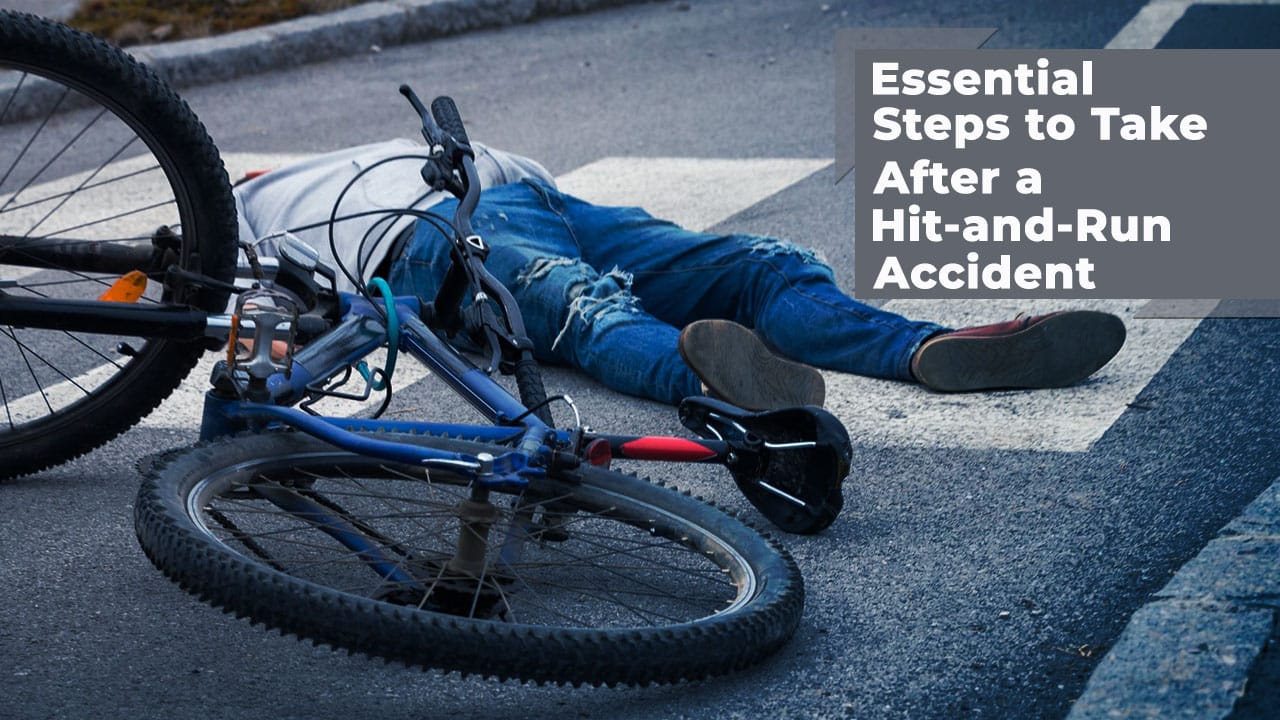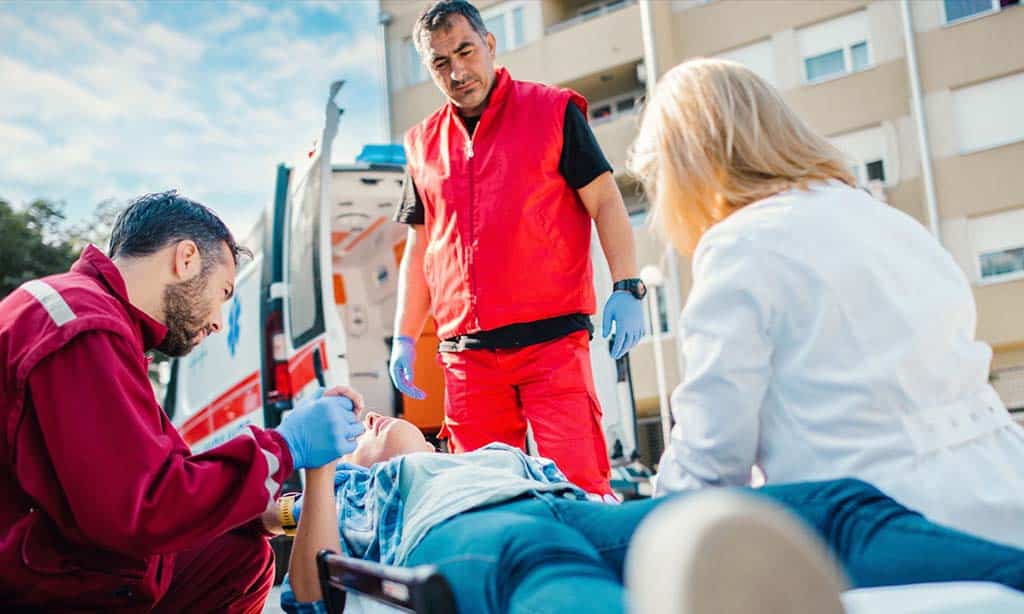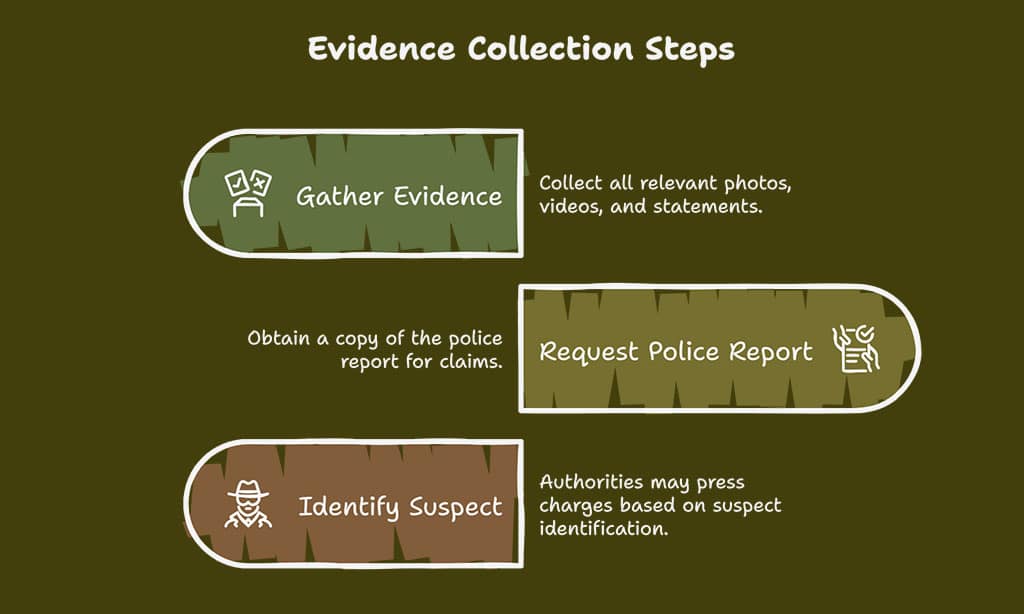A hit-and-run accident can be a shocking and distressing experience. Whether you’re a driver, pedestrian, or cyclist, knowing what to do in such a situation is crucial to protect yourself, gather evidence, and seek justice.
Many victims feel helpless after a hit-and-run, but taking the right steps immediately can improve your chances of finding the responsible party and getting proper compensation.
According to recent statistics, nearly 700,000 hit-and-run accidents occur annually in the U.S., leaving victims struggling to recover damages. Understanding the legal process, insurance claims, and preventive measures can significantly impact the outcome of your case.
This comprehensive guide will walk you through the 15 essential steps to take after a hit-and-run accident, ensuring you take informed action to safeguard your rights and secure compensation.
15 Essential Steps to Take After a Hit-and-Run Accident
A hit-and-run accident can be a traumatic and overwhelming experience. When the responsible driver flees the scene, it may feel like you’re left without recourse. However, knowing the critical actions to take immediately after the incident can improve your chances of recovering damages, securing evidence, and finding the responsible party.
Whether you are the driver, a pedestrian, or a cyclist, it’s essential to follow a clear course of action to ensure your safety and protect your legal rights.
From assessing your well-being to documenting the scene, each step plays a crucial role in how your case will unfold. With an estimated 700,000 hit-and-run accidents occurring annually in the U.S., it’s clear that such incidents can happen to anyone at any time. Knowing how to respond appropriately is key to ensuring that you get the proper medical care, compensation, and support you deserve.
Now, let’s dive into the 15 Essential Steps to Take After a Hit-and-Run Accident, starting with the first and most important: ensuring your safety.
1. Ensure Your Safety First
Your safety should be your top priority. If you’re involved in a hit-and-run accident, staying calm and acting swiftly can make a crucial difference. The moments following the incident are critical for both your well-being and gathering essential evidence.
Follow these immediate steps to ensure your safety, document the event, and set the foundation for legal and insurance claims.
- Move to a safe location away from traffic.
- Check yourself and any passengers for injuries.
- If you’re unable to move due to injury, try signaling for help.
- Turn on your hazard lights to alert other drivers.
| Safety Checklist | Actions |
| Move to safety | Shift away from moving traffic |
| Check for injuries | Assess yourself and passengers |
| Signal for help | Use hazard lights or wave for attention |
| Call 911 | Request emergency assistance |
2. Call Emergency Services
Regardless of how minor the accident seems, calling the authorities is crucial to ensure an official report is filed, medical assistance is dispatched if needed, and to increase the chances of finding the perpetrator.
Law enforcement can provide valuable assistance in collecting evidence, interviewing witnesses, and guiding you through the next steps. Immediate reporting also strengthens your insurance claim and legal standing. Below is a quick reference on what to provide when calling emergency services:
| Emergency Call Checklist | Details to Provide |
| Accident Location | Exact address or nearest landmark |
| Vehicle Description | Color, make, model, and license plate (if available) |
| Injuries | Describe any visible injuries or symptoms |
| Witnesses | Mention if there are people who saw the accident |
| Scene Hazards | Report leaking fuel, damaged poles, or roadblocks |
Make sure to stay on the line with the dispatcher and follow any instructions they give you. If law enforcement arrives, request a copy of the police report or obtain the report number for future reference.
- Dial 911 to report the hit-and-run accident.
- Request medical assistance if anyone is injured.
- Provide the dispatcher with your location and details of the fleeing vehicle.
- Stay on the line until authorities arrive.
3. Gather Key Details About the Incident
If you can, take note of important details about the at-fault driver and their vehicle. Gathering as much information as possible will significantly aid law enforcement and your insurance company in identifying the perpetrator and processing your claim. A hit-and-run accident often happens quickly, leaving victims with limited time to react.
However, even small details like a partial license plate or the direction the vehicle fled can be invaluable in investigations. If you’re in a state of shock or injured, try asking a witness to record details for you.
- License plate number (even partial numbers can help).
- Vehicle make, model, and color.
- Direction the vehicle fled.
- Any visible damage to the other car.
| Key Information | Details to Note |
| License Plate | Even partial plates are useful |
| Vehicle Type | Make, model, color, and special features |
| Direction of Travel | Where the car fled after impact |
| Damage | Any visible dents or scratches |
4. Look for Witnesses and Collect Statements
Witnesses can play a crucial role in helping authorities identify the suspect, as they may have noticed details you missed during the chaotic moment of the accident. Their testimony can provide critical information about the at-fault vehicle, such as the driver’s appearance, the car’s condition, or even the direction in which it fled.
Law enforcement often relies on witness statements to piece together missing details in hit-and-run cases. If possible, ask multiple witnesses for their accounts, as different perspectives can create a more comprehensive understanding of the event.
- Ask nearby pedestrians or drivers if they saw what happened.
- Request their names and contact information.
- If they agree, record their statement on your phone.
| Witness Information | Details to Collect |
| Name | Full name and contact number |
| Location | Where they witnessed the accident |
| Statement | Summary of what they saw |
| Video Testimony | Record on your phone if they agree |
5. Take Photos and Videos
Visual evidence is one of the strongest tools to support your case, as it provides undeniable proof of the incident and helps substantiate your claims. Photos and videos can capture crucial details that may otherwise be overlooked, such as skid marks, damage patterns, road conditions, and even debris left behind by the fleeing vehicle.
Properly documenting the scene can significantly impact the outcome of an insurance claim or a police investigation. Authorities and insurance adjusters rely heavily on visual proof to determine liability and estimate damages, making it essential to gather as much footage as possible.
In some cases, clear and well-documented visual evidence has led to the identification and prosecution of hit-and-run offenders.
- Capture wide-angle photos of the accident scene.
- Take close-up shots of damages to your vehicle.
- Record a video describing the accident while showing the surroundings.
| Recommended Photos | Purpose |
| Vehicle Damage | Shows impact points and severity |
| Surrounding Area | Establishes accident location |
| Traffic Signals | Verifies right-of-way violations |
| Skid Marks/Debris | Indicates force of collision |
6. Check for Surveillance Cameras Nearby
Nearby security cameras may have recorded the incident, providing crucial evidence that can help identify the at-fault driver. Surveillance footage from traffic cameras, nearby businesses, gas stations, or even private residences may have captured the accident.
Many establishments have CCTV cameras that record 24/7, but footage is often deleted after a short period, so it’s important to act quickly.
Approach business owners or homeowners in the area to ask if they have footage that may be useful. In some cases, law enforcement can subpoena video recordings if necessary. The clearer the footage, the stronger your case will be when filing a claim or pursuing legal action.
Consider checking for nearby doorbell cameras as well, as these are becoming increasingly common and may have recorded the suspect’s vehicle or license plate.
- Look for businesses, gas stations, or ATMs with surveillance cameras, as they often record parking lots and street activity. These locations are key sources of footage that may have captured the hit-and-run vehicle.
- If the accident happened near homes, ask residents if they have doorbell cameras. Many modern doorbell systems record high-quality video that can provide vital details such as the car’s license plate or a clear view of the driver.
- Request footage as soon as possible before it’s erased, as many security systems automatically overwrite recordings after a set period.
| Surveillance Source | What It Captures | How to Access |
| Business Security Cameras | Street traffic, parking lots | Ask store manager or owner |
| Gas Station CCTVs | Vehicles near pumps or exits | Request footage from station staff |
| ATM Cameras | Cars and people in proximity | Contact the bank with police request |
| Residential Doorbell Cams | Pedestrian & vehicle movement | Speak with homeowners politely |
| Traffic Cameras | Intersections & roads | Requires police request in most cases |
7. Write Down a Detailed Accident Report
Your memory may fade over time, so document everything while it’s fresh. Writing a comprehensive accident report immediately after the hit-and-run is crucial in providing accurate details for law enforcement, insurance claims, and potential legal actions. By capturing all the relevant information while it’s still clear in your mind, you minimize the chances of missing important details that could impact the investigation.
Consider organizing your report with the following structure:
| Key Details to Document | Description |
| Date & Time | Exact time and date of the accident |
| Location | Address or specific area where the incident occurred |
| Weather & Road Conditions | Describe visibility, road conditions, and weather factors |
| Traffic Signals & Signs | Mention any relevant signals, stop signs, or speed limits |
| Damage Assessment | Detail damages to your vehicle and any other property |
| Injuries | Note any pain, discomfort, or visible injuries |
| Witness Accounts | Include any witness statements or their contact information |
Keeping your report structured helps ensure that all necessary information is included, improving the chances of a successful claim or legal action.
- Write down the date, time, and exact location of the hit-and-run accident.
- Describe how the accident happened in your own words.
- Include weather conditions, road conditions, and traffic signals.
8. File a Police Report
Filing a report creates an official record of the accident, which is critical for legal, insurance, and investigative purposes. A police report serves as an unbiased, formal documentation of the incident and can significantly strengthen your insurance claim.
Law enforcement officers will include important details, such as witness statements, physical evidence, and their own assessment of the scene, which may aid in identifying the fleeing driver.
Additionally, having an official report can be crucial if you later decide to pursue legal action for damages or medical expenses. In some states, failure to report an accident can lead to fines or penalties, even if you were not at fault. Be sure to provide as much information as possible to assist officers in their investigation and obtain a copy of the report for your records.
- Provide all the evidence you’ve gathered, including photos, videos, and witness statements. Ensure that you organize all relevant documents, as law enforcement and insurance companies will require detailed information to proceed with investigations and claims.
- Request a copy of the police report for your records, as this document is essential for filing insurance claims and any potential legal action. Police reports contain objective assessments of the accident and may include important details that you might have overlooked.
- If authorities identify the suspect, they may press criminal charges, leading to penalties such as fines, license suspension, or even jail time, depending on state laws. This can also strengthen your case for pursuing compensation for damages or medical expenses.
| Key Actions After Filing a Police Report | Purpose |
| Submit all evidence (photos, videos, witness statements) | Supports police investigation and legal case |
| Obtain a copy of the police report | Essential for insurance claims and legal actions |
| Follow up with law enforcement | Stay updated on the case’s progress |
| Check local hit-and-run laws | Understand penalties for offenders and your rights |
| Seek legal assistance if needed | Helps maximize compensation and ensures legal compliance |
9. Notify Your Insurance Company
Even if the at-fault driver isn’t found, informing your insurance provider is essential to ensure that you can still receive compensation for damages. Many insurance policies include coverage for hit-and-run incidents under uninsured motorist protection, which can help cover medical expenses and vehicle repairs.
Failing to report the accident in a timely manner may result in claim denial, leaving you responsible for the financial burden.
Additionally, providing your insurer with as much evidence as possible—such as photos, witness statements, and a police report—can strengthen your case. Below is a quick guide to navigating the insurance claim process after a hit-and-run:
| Step | Action |
| 1 | Contact your insurance provider immediately. |
| 2 | Provide the police report number and relevant details. |
| 3 | Submit photographic and video evidence of damages. |
| 4 | Check if your policy includes uninsured motorist coverage. |
| 5 | Keep track of all communication with your insurer. |
| 6 | Consult an attorney if you encounter claim disputes. |
By taking these steps, you increase the likelihood of receiving fair compensation for damages and medical expenses resulting from the hit-and-run accident.
- Contact your insurer immediately to report the hit-and-run accident.
- Provide them with the police report number and evidence.
- Ask about your uninsured motorist coverage.
10. Understand Hit-and-Run Laws in Your State
Each state has different laws regarding hit-and-run accidents, and penalties for fleeing the scene can vary significantly depending on the severity of the incident. In many states, a hit-and-run involving property damage is classified as a misdemeanor, while one that results in injury or death can be charged as a felony, leading to severe legal consequences such as jail time and hefty fines.
Additionally, some states have no-fault insurance laws, meaning that victims may be able to claim compensation through their own insurance, regardless of whether the perpetrator is caught.
Many states also run Victim Compensation Programs to help cover medical bills, lost wages, and funeral expenses for victims of serious hit-and-run cases. Understanding your state’s specific laws can help you navigate your legal options effectively.
| State | Misdemeanor Penalty | Felony Penalty | Compensation Options |
| California | Up to 6 months in jail, $1,000 fine | Up to 4 years in prison, $10,000 fine | Victim Compensation Program, uninsured motorist coverage |
| Texas | Up to 1 year in jail, $4,000 fine | Up to 20 years in prison, $10,000 fine | Personal injury lawsuit, crime victim funds |
| Florida | Up to 60 days in jail, $500 fine | Up to 30 years in prison, $10,000 fine | PIP insurance, state assistance funds |
| New York | Up to 90 days in jail, $500 fine | Up to 7 years in prison, $5,000 fine | No-fault insurance, crime victim compensation |
By knowing your state’s laws and available compensation options, you can take the appropriate legal steps after a hit-and-run accident.
- In most states, leaving the scene of an accident is a criminal offense.
- Penalties can include license suspension, fines, and jail time.
- Some states have a Victim Compensation Program for hit-and-run victims.
11. Seek Medical Attention and Keep Records
Even if you don’t feel injured immediately, it’s important to seek medical attention after a hit-and-run accident. Some injuries, such as whiplash, concussions, or internal injuries, may not be immediately apparent.
Delaying treatment could not only jeopardize your health but may also affect your legal case or insurance claim. Always follow through with recommended medical treatments and keep detailed records of your visits, diagnoses, treatments, and any prescribed medications.
These records can be vital if you need to pursue a personal injury claim or compensation.
Action Steps:
- Seek medical attention as soon as possible after the accident, even if you feel fine.
- Keep all medical records, including doctor visits, treatments, prescriptions, and test results.
- Follow up on any ongoing health concerns related to the accident.
- If you experience new symptoms, report them to your doctor immediately.
| Action | Details |
| Seek medical attention immediately | Even if no injuries are visible, consult a doctor to rule out any internal injuries. |
| Keep all medical records | Save all doctor visits, treatments, prescriptions, and test results. |
| Follow up with recommended treatments | Ensure you attend all follow-up appointments and therapies. |
| Report any new symptoms | If new symptoms appear, report them to your doctor immediately. |
12. Track Medical and Repair Expenses
It’s crucial to keep a detailed record of all medical and repair expenses that arise due to the hit-and-run accident. This will help ensure that you are reimbursed for any costs incurred, whether through insurance, personal injury claims, or other forms of compensation.
Create a file for medical bills, car repair invoices, and any other receipts related to the accident, as this documentation will strengthen your insurance claim and legal case.
Action Steps:
- Save all receipts and invoices for medical treatments and vehicle repairs.
- Document any out-of-pocket expenses related to the accident, including transportation to medical appointments.
- Track any lost wages or income due to your injuries or vehicle damage.
- Keep detailed notes of all treatments and repairs over time.
| Action | Details |
| Save all receipts and invoices | Keep all medical bills and car repair invoices. |
| Document out-of-pocket expenses | Track transportation costs, parking, and any other related expenses. |
| Keep a record of lost wages | Document any work missed due to injuries or the accident. |
| Organize all documents in a file | Create a dedicated folder for all medical and repair-related documentation. |
13. Check if You Qualify for Uninsured Motorist Coverage
If the at-fault driver is not found, you may still be able to recover compensation for your damages through your own insurance policy, specifically through uninsured motorist (UM) coverage.
Many auto insurance policies offer UM coverage, which helps cover medical expenses and vehicle repairs when the responsible party is unknown or lacks adequate insurance. Review your insurance policy to determine if you have this coverage and how to file a claim.
Action Steps:
- Review your insurance policy to check if you have uninsured motorist coverage.
- Contact your insurance provider to file a claim under your UM coverage.
- Submit all necessary documents, including the police report, medical bills, and repair invoices, to expedite the claim process.
| Action | Details |
| Review your insurance policy | Check if your auto insurance includes uninsured motorist coverage. |
| Contact your insurance provider | Report the hit-and-run accident and inquire about UM coverage. |
| Submit necessary documents | Provide the police report, medical bills, and repair invoices to your insurer. |
14. Consult a Personal Injury Lawyer if Necessary
If you sustained significant injuries or incurred substantial damages from the hit-and-run accident, it may be beneficial to consult a personal injury lawyer. A lawyer can help you navigate the legal process, ensure your rights are protected, and increase the likelihood of receiving full compensation.
Personal injury lawyers specialize in cases involving accidents and can handle negotiations with insurance companies, assist with filing lawsuits, and provide legal representation if necessary.
Action Steps:
- Research personal injury lawyers in your area who specialize in hit-and-run accidents.
- Schedule a consultation to discuss your case and understand your legal options.
- Gather all relevant documentation, including police reports, medical records, and repair invoices, before meeting with your lawyer.
- Consider hiring a lawyer if negotiations with insurance companies are not proceeding in your favor.
| Action | Details |
| Research personal injury lawyers | Look for lawyers with experience in hit-and-run accident cases. |
| Schedule a consultation | Discuss your case and understand your legal options. |
| Gather relevant documentation | Prepare the police report, medical records, and repair invoices for your lawyer. |
| Consider hiring a lawyer | If your case involves significant damages or injuries, consult a lawyer for representation. |
15. Take Preventive Measures for the Future
While you can’t prevent accidents from happening, you can take steps to reduce the chances of being involved in a hit-and-run incident in the future. Practice defensive driving, remain vigilant on the road, and avoid distractions while driving.
Additionally, consider installing a dash cam in your vehicle to capture video footage of potential accidents. This simple device can provide invaluable evidence in the event of an accident and improve your chances of a successful claim.
Action Steps:
- Install a dash cam to record your driving and protect yourself in the event of a hit-and-run.
- Always drive defensively and stay aware of your surroundings.
- Avoid driving in high-risk areas or times of day when accidents are more likely.
- Educate your family and friends about road safety and hit-and-run prevention
| Action | Details |
| Install a dash cam | Record your driving to capture potential accidents or incidents. |
| Practice defensive driving | Stay alert and avoid distractions while on the road. |
| Drive in safer areas or times | Avoid high-risk areas or driving during peak accident hours. |
| Educate others on road safety | Share road safety tips with family and friends to help reduce accidents. |
By following these 15 steps, you can better protect yourself, gather essential evidence, and increase your chances of receiving the compensation you deserve. Taking immediate action after a hit-and-run accident is crucial for your safety and your legal standing.
Takeaways
Being involved in a hit-and-run accident is undoubtedly a stressful and unsettling experience. However, knowing the Essential Steps to Take After a Hit-and-Run Accident can make a significant difference in protecting your rights and ensuring that you receive the compensation you deserve.
From the moment of the incident, it’s important to stay calm and follow the necessary steps to preserve evidence, report the accident, and seek medical attention, even if you don’t feel injured immediately. Each step you take from ensuring your safety to gathering key evidence plays a critical role in holding the offender accountable.
The first priority should always be your safety. Immediately after the accident, ensure you are in a safe location, check for injuries, and contact emergency services. Calling the police not only ensures medical assistance is dispatched, but it also provides a crucial foundation for any insurance claims or legal actions you may need to take.
One of the most critical Essential Steps to Take After a Hit-and-Run Accident is gathering as much information as possible, whether it’s about the fleeing vehicle, potential witnesses, or surrounding surveillance footage. This evidence will help law enforcement investigate the incident and, hopefully, identify the responsible party.











































